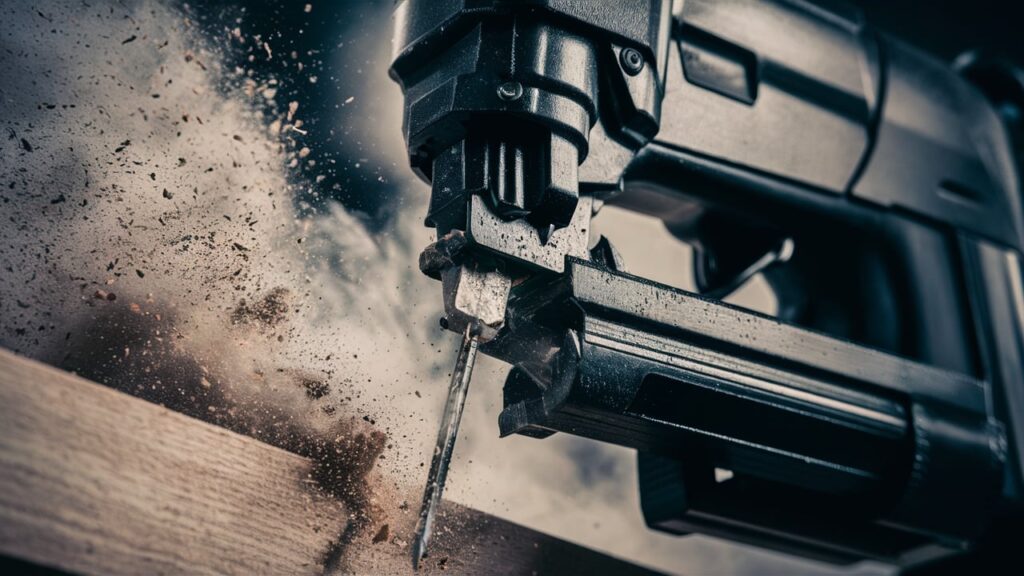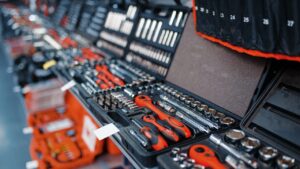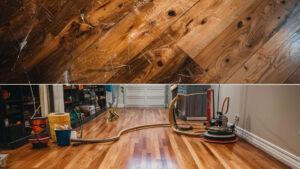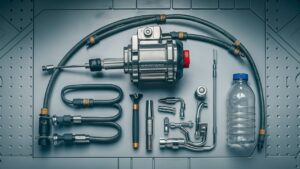Yes, nail guns can be dangerous if not used properly. Accidental firing and improper handling can lead to serious injuries.
Nail guns are valuable tools in construction and carpentry, increasing efficiency and productivity. However, it’s crucial to recognize their potential dangers and take necessary precautions. Understanding the risks associated with nail guns, such as puncture wounds and muscle damage, is essential for ensuring safe usage.
This article will delve into the common hazards of nail guns, offer tips for safe operation, and provide insights into the importance of proper training and maintenance. By being aware of these factors, individuals can minimize the potential dangers associated with nail guns and work more safely in their respective industries.
The Nail Gun: A Tool Of Power And Peril
The nail gun poses a significant danger due to the potential for accidental firing and serious injuries. Improper handling or lack of safety precautions can lead to severe consequences, making it crucial for users to prioritize safety measures and proper training when operating this powerful tool.
The Essence Of Nail Gun Utility
Nail guns are efficient tools for fastening materials together quickly and securely.
They are commonly used in construction, woodworking, and other industries for their speed and precision.
Potential Dangers Lurking
Nail guns can cause serious injuries if not used properly.
Accidental discharge, ricochets, and misfires are common risks associated with nail guns.
Common Misconceptions About Nail Gun Safety
Nail gun safety is often misunderstood, leading to misconceptions about its danger. However, it is important to note that nail guns can be dangerous if not used properly. Understanding proper handling, safety precautions, and training can help mitigate potential risks and ensure safe usage.
Myth Vs. Reality
When it comes to construction work, nail guns have become a staple tool for workers. However, there are still some common misconceptions about nail gun safety that need to be addressed. One of the biggest misconceptions is whether or not nail guns are dangerous.
Busting The Myths
The reality is that nail guns can be dangerous if not used properly. One myth is that nail guns only cause injuries to inexperienced workers. However, even experienced workers can become injured if they fail to follow proper safety protocols.
Another myth is that nail guns are only dangerous if they misfire. The truth is that nail guns can cause serious injury even when they work correctly, especially if the worker is not properly trained or using the appropriate safety gear.
Ensuring Nail Gun Safety
To prevent injuries, it is important to follow proper safety protocols when using a nail gun. This includes wearing appropriate safety gear, such as eye and ear protection, and using the correct type of nail gun for the job.
It is also important to be aware of your surroundings and to never aim the nail gun at anyone, even if it is not loaded. Additionally, taking breaks and staying alert can help prevent accidents on the job site.
Overall, while nail guns can be dangerous if not used properly, following proper safety protocols and using the appropriate safety gear can help prevent injuries. By busting these common myths and emphasizing the importance of safety, we can ensure a safer work environment for all construction workers.
Statistical Insights: Nail Gun Injuries And Accidents
When it comes to construction tools, the nail gun is undoubtedly one of the most efficient and time-saving inventions. It has revolutionized the way we build, making tasks that were once labor-intensive much quicker and more convenient. However, with great power comes great responsibility, and it’s important to acknowledge that nail guns can also pose a significant risk if not used properly. In this section, we will delve into the statistical insights surrounding nail gun injuries and accidents, shedding light on the magnitude of the issue.
Numbers Don’t Lie
Looking at the numbers can provide us with a clearer understanding of the dangers associated with nail guns. According to the Occupational Safety and Health Administration (OSHA), nail guns are responsible for approximately 37,000 emergency room visits each year in the United States alone. That’s a staggering number that highlights the gravity of the situation. It’s crucial to recognize that these injuries are not minor inconveniences but can often result in serious consequences, including puncture wounds, fractures, and even fatalities.
A Closer Look At The Data
To truly grasp the impact of nail gun injuries and accidents, let’s explore some specific data points:
- In the construction industry, nail guns account for approximately 25% of all tool-related injuries.
- Studies have shown that the most common type of nail gun injury is a puncture wound to the hands or fingers, accounting for more than 50% of reported incidents.
- Interestingly, around 65% of nail gun injuries occur in non-construction settings, such as residential projects or do-it-yourself (DIY) projects.
These statistics highlight the fact that nail gun injuries are not limited to professional construction workers but can affect individuals from various backgrounds. It serves as a reminder that proper safety precautions should be taken by anyone using a nail gun, regardless of their level of experience or expertise.
By understanding the statistical insights behind nail gun injuries and accidents, we gain a deeper appreciation for the importance of safety measures. Whether you’re a professional contractor or a weekend DIY enthusiast, it’s crucial to prioritize safety and take the necessary precautions to prevent these unfortunate incidents.

Personal Accounts: When Nail Guns Go Wrong
Safety First: Essential Tips For Nail Gun Use
When it comes to using a nail gun, safety should always be your top priority. Nail guns are powerful tools that can greatly increase efficiency and productivity, but they can also be dangerous if not used correctly. Whether you are a professional carpenter or a DIY enthusiast, it is crucial to follow essential safety tips to prevent accidents and injuries. In this section, we will discuss the key factors to consider for safe nail gun use, including preparation and operational best practices.
Preparation Is Key
Before you start using a nail gun, it is essential to take the necessary precautions to ensure a safe working environment. Here are some important steps to follow:
- Inspect the nail gun: Before each use, carefully examine the nail gun for any signs of damage or malfunction. Check the cords, hoses, and connections to ensure they are in good condition.
- Wear appropriate protective gear: Always wear safety glasses or goggles to protect your eyes from flying debris. Additionally, wear ear protection to guard against the noise generated by the nail gun.
- Clear the workspace: Remove any obstacles or debris from your work area to prevent tripping hazards. Make sure there is adequate lighting to ensure proper visibility.
- Secure the workpiece: Ensure that the workpiece is firmly secured in place before using the nail gun. This will prevent it from moving or shifting unexpectedly during the nailing process.
Operational Best Practices
Once you have prepared the workspace, it is crucial to follow operational best practices to minimize the risk of accidents. Consider the following tips:
- Hold the nail gun securely: Always maintain a firm grip on the nail gun, keeping your finger away from the trigger until you are ready to fire. This will prevent accidental discharge.
- Position yourself correctly: Stand in a stable position with your feet shoulder-width apart. Keep a safe distance from the nailing area and ensure that bystanders are also at a safe distance.
- Do not bypass safety mechanisms: Nail guns are equipped with safety features such as sequential triggers or contact triggers. Do not tamper with these mechanisms and use them as intended.
- Do not aim at others: Never point the nail gun at yourself or others, even when it is not loaded. Treat it as if it is always loaded to avoid potential accidents.
- Disconnect power source when not in use: When taking breaks or changing nails, disconnect the power source and engage the safety lock to prevent accidental firing.
By following these essential safety tips, you can significantly reduce the risk of accidents and injuries while using a nail gun. Remember, safety should never be compromised, and taking the time to prioritize it will ensure a smooth and secure work experience.
Choosing The Right Nail Gun For The Job
When it comes to using a nail gun, safety is of utmost importance. Choosing the right nail gun for the job is crucial for preventing accidents and ensuring the successful completion of your project. This involves understanding the different types of nail guns available, their uses, and making an informed decision based on the specific requirements of your project.
Types And Uses
There are several types of nail guns available, each designed for specific applications. Understanding the differences between these types will help you choose the most suitable nail gun for your project.
- Framing Nailers: Ideal for heavy-duty projects such as framing, decking, and fencing.
- Finish Nailers: Perfect for trim work, crown molding, and other delicate carpentry tasks.
- Brad Nailers: Suited for light trim work and delicate moldings.
- Staple Guns: Used for upholstery, carpeting, and other fabric-related projects.
Making An Informed Decision
Before selecting a nail gun, it’s important to consider the scope and nature of your project. Factors such as the type of material being fastened, the size of the fasteners needed, and the required nail capacity should all be taken into account. Additionally, be sure to choose a nail gun with safety features such as trigger locks and anti-jam mechanisms to minimize the risk of accidents.
Training And Certification: Minimizing Risks
Using a nail gun without proper training can be dangerous.
Proper training is crucial to prevent accidents.
There are certification programs to ensure safe usage.
Creating A Safe Work Environment
Nail guns can be dangerous if not used properly, posing a risk of serious injury. Creating a safe work environment involves providing proper training, using appropriate safety gear, and following manufacturer guidelines. Implementing safety protocols and regular equipment maintenance is crucial in preventing accidents.
Workspace Setup And Maintenance
Clear clutter for smooth nail gun operation. Keep work area organized.
Maintain tools regularly to prevent malfunctions. Store nail gun properly.
Fostering A Culture Of Safety
Provide training on nail gun usage and safety procedures.
- Emphasize the importance of wearing protective gear.
- Encourage reporting of any safety concerns immediately.
Regularly inspect and maintain nail guns to ensure they are safe to use.
Understanding The Legal Aspects
Understanding the legal aspects surrounding the use of nail guns is crucial in assessing their potential dangers. Awareness of safety regulations, proper training, and precautions can help prevent accidents and ensure a safe working environment. Stay informed and prioritize safety when working with nail guns.
Regulations And Compliance
Understanding the legal aspects of nail guns is crucial. Regulations and compliance are key factors. Compliance with safety standards is mandatory.
Liability In Case Of Accidents
Liability in case of accidents is a serious concern. Understanding legal responsibilities is essential. Accidents can lead to legal consequences.
Future Of Nail Gun Safety
As technology advances, the future of nail gun safety looks promising. New innovations and practices are enhancing workplace safety and reducing the risks associated with nail guns.
Technological Advancements
Automatic safety features in modern nail guns help prevent accidental firing, reducing the chances of injuries. Sensors and triggers have been developed to improve user control and reduce the likelihood of mishaps.
Predicting Safer Practices
- Training programs are being implemented to educate users on proper nail gun handling.
- Companies are investing in safety gear to protect workers from potential hazards.
- Research is being conducted to identify common causes of nail gun accidents and develop preventive measures.
Frequently Asked Questions
Are Nail Guns Dangerous?
Yes, nail guns can be dangerous if not used properly. Accidents can happen when the nail gun is not handled with care, and can cause serious injuries.
What Are The Common Nail Gun Injuries?
The most common nail gun injuries include puncture wounds, fractures, and eye injuries. These injuries can occur when the nail gun is not used properly or protective gear is not worn.
How Can I Prevent Nail Gun Injuries?
To prevent nail gun injuries, always follow the manufacturer’s instructions, wear appropriate protective gear, and be aware of your surroundings. Keep the nail gun pointed away from yourself and others, and never leave it unattended.
Do I Need Any Training To Use A Nail Gun?
Yes, it is recommended to take a training course before using a nail gun. This will help you understand how to properly operate the tool and minimize the risk of injury.
Conclusion
To sum it up, nail guns can be dangerous if not used correctly. They offer efficiency and speed in construction projects, but accidents can occur due to user error or lack of proper safety precautions. It is crucial to receive proper training, wear protective gear, and follow manufacturer’s guidelines to minimize the risks associated with nail guns.
Always prioritize safety to avoid potential injuries and ensure a successful project.








